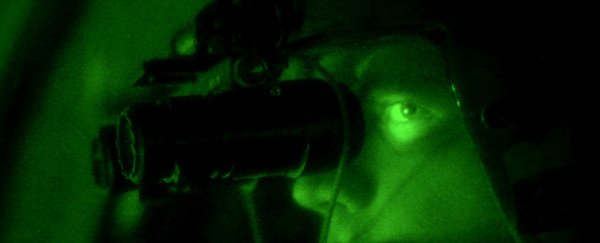You've no doubt heard a lot about graphene already, the ultra-thin, ultra-light, ultra-flexible, ultra-strong material that has the potential to be used in all kinds of groundbreaking innovations. Now researchers think they've found a new use for this revolutionary modern material: creating night vision lenses that are both incredibly thin and incredibly powerful at the same time.
Think along the lines of the kit used by the titular character from the film Predator. As Gizmodo reports, graphene-based contact lenses could replace the bulky night vision headsets we see in use today, thanks to the properties and characteristics of the material.
By combining some of the steps in the detection process and putting it all in a simpler package, graphene could transform night vision technology for anyone who relies on it – from alien bounty hunters to the emergency services.
Researchers at MIT have developed the new design, which could potentially be scaled up and used at a commercial level. The new graphene-based thermal sensor they've come up with is just one atom thick (we told you it was ultra-thin) and is unencumbered by some of the limitations associated with current night vision technology.
To start off with, the night vision goggles of today can't span the entire range of infrared light without using multiple sensors, which of course adds to the bulk and the price.
What's more, to see heat patterns at a long distance, a cryogenic cooling system is required to effectively cut out the interference and get an image that's usable at the other end. The new sensor proposed by the team at MIT would deal with both these problems at once, covering the full infrared spectrum and – after integration with a silicon microelectromechanical system (MEMS) – removing the need for cryogenic cooling.
The researchers' paper has now been published in the American Chemical Society (ACS) journal Nano Letters.
"Testing showed [the new sensor] could be used to detect a person's heat signature at room temperature without cryogenic cooling," explains the ACS. "In the future, advances could make the device even more versatile."
And that versatility will be very important as the technology is developed further: you might immediately think of government spies or soldiers sneaking around with night vision equipment, but the same infrared technology can be very useful for everything from disaster relief efforts to checking under layers of paint.
Don't forget self-driving cars either – superior night vision technology is going to be crucial in giving these autonomous automobiles the ability to 'see' in the dark.
